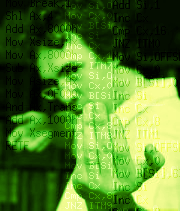I had thought that fixing 'slope unit-tests' in addition to 'wall unit tests' would mean my fixes to get the scorpeye behaving as intended. That would mean the 'summer code review' would be over and the 'summer game dev' could start. Well, that was hoping too much, because there's actually one more test that, for some reason, doesn't show up in ./testme --list but still exists and is important: TestNScripts. This one loads the real .cmd files of SchoolRush and checks parsing went fine. And it does not only check one of them: it will reload many scripts in the same "engine", the way the game does.
while (ntests < n) {
TestBench tc;
for (uint i=0; i < REDO; i++) {
printf("== R%i/%i redo%i ", ntests, n, i);
tc.ResetEngineResources();
ParseScript(tc, scripts[rand()%nscripts], __FUNCTION__);
tc.CheckEngine();
}
ntests++;
tc.Over();
}No assertion failure here, instead one of the trickiest things to track: memory exhaustion. So it's time for me to learn how to use my tracking tools again. I even left documentation for my future self back in the past (thanks, past self ^^). Once again, the problem arise also in 'default'... looks like I had been over-optimistic in September 2021 when I merged sprites overlay into default.
Well, at least if gives me hope this time: on the 'newmap branch', the forgotten test terminates with 'Out of DS memory'. I managed to get a log of what is allocated at that time, but it would require filtering what has leaked from last ParseScript, and what belongs to the current, interrupted because there's no more memory, running ParseScript. Hopefully, when the bug occurs on default, it gives me a nice 'halt because of leakage' and not a 'out of DS memory' condition.
[done] understand why the new branch gets so high on memory consumption- [todo] make sure .spr and .cmd files in fakeroot/ are working fine (despite they now need bilou.spr and school.spr)
- [todo] that should be the job of UnitTest.mk
If I want to have an estimate of the memory it would take on the NDS, I'd have to keep track of individual allocs and frees and see whether they reach some maximum at a new alloc. (2023-10-23)
What is that one-time allocator ? well, maybe you've heard of bottom-up allocator, where you just keep track of one position in memory: the top-of-used-area, and everything above the top is unused memory. Of course, as soon as you free things out-of-order compared to how you allocated them, that allocator is no longer enough. You would like at least a list of freed-blocks-that-could-further-reduce-top in case the block at the top is eventually freed. Well, the one-time allocator does not even do that. Any byte of one-time memory can be allocated exactly only once. If freed, it is "painted" as free and will remain like that until the ongoing test terminates.
That is silly as far as memory management is concerned, but it means if some block has not benn freed when the test terminates, you know what role this memory had when it failed. There can't be any tricky-as-hell case where "yeah, that memory had been used for A and then freed, but then it has been re-allocated for B. So maybe B is wrong or maybe something still had a reference of when it was used for A". Sometimes it truly helps. When I'm not misguided by my past self with lying error messages.




 Vote for your favourite post
Vote for your favourite post

